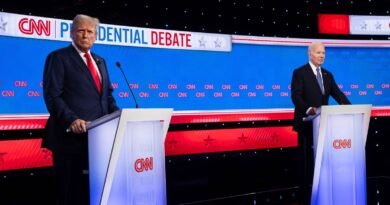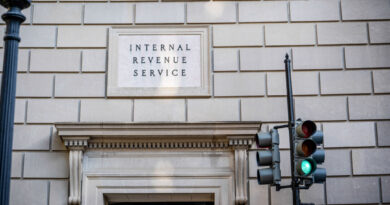Trump: EU Should Purchase US Energy to Secure Tariff Relief
The president has dismissed the EU’s proposals for a ‘zero for zero’ tariff arrangement on vehicles and industrial products.
On April 7, U.S. President Donald Trump stated that the European Union would need to purchase $350 billion in American energy to receive tariff relief.
When a reporter at the White House inquired whether this offer would be sufficient for him to reconsider the 20 percent import duties, Trump replied: “No, it’s not.”
“The European Union has been quite difficult over the years. We have a [trade] deficit of $350 billion with the EU, and that is going to disappear quickly,” Trump remarked. “One of the easiest ways for that to happen is they need to buy our energy from us … They could purchase it, and we could eliminate $350 billion in just one week.”
The 27-nation EU currently faces 25 percent tariffs on steel, aluminum, and cars, and 20 percent tariffs set to begin on April 9 for nearly all other goods under Trump’s new policy of reciprocating against countries that impose high barriers to U.S. imports.
On Monday night, the Commission presented its initial retaliatory tariffs of 25 percent on a variety of U.S. imports, ranging from dental floss to diamonds.
The EU will start enforcing the tariffs on April 15, with a second phase beginning a month later.
EU trade chief Maros Sefcovic stated on Monday: “While the EU remains open to negotiation and prefers that approach, we will not wait indefinitely.”
This instrument allows the EU to target U.S. services or restrict American companies’ access to its public procurement opportunities.
Irish Foreign Minister Simon Harris described the ACI as “very much the nuclear option.”
Energy
The EU is already a significant consumer of U.S. energy. Trump has previously expressed his determination to make the EU an even larger buyer of liquefied natural gas (LNG).
Last year, he issued a warning to the EU, stating that he would impose tariffs on the bloc unless it purchased sufficient amounts of American oil and gas to offset its trade deficit with the United States.
EU leaders are focusing on a renewable-first energy strategy, coupled with comprehensive legislation to make the bloc the first climate-neutral continent by 2050.
Reuters, Tom Ozimek, and Guy Birchall contributed to this report.





